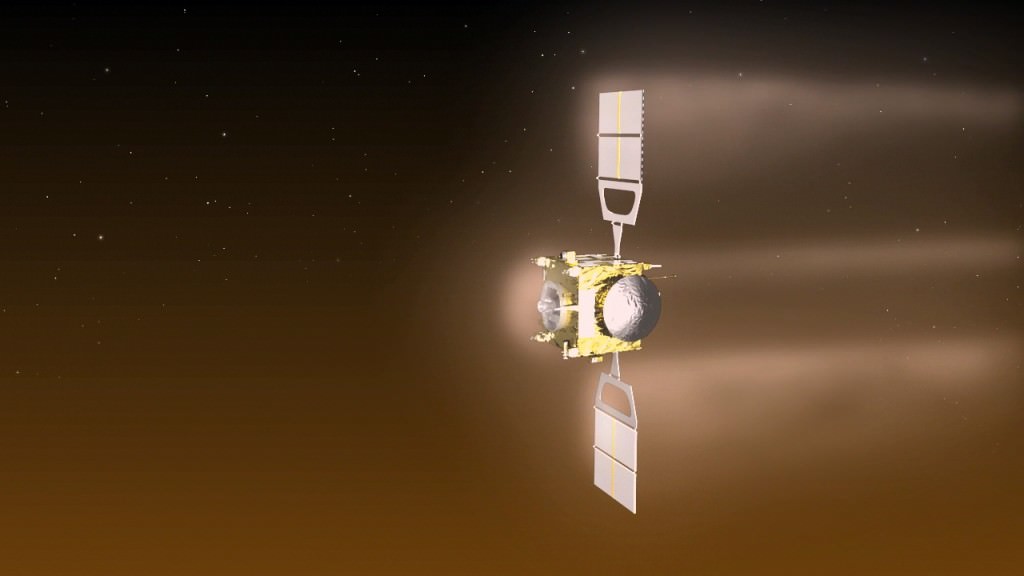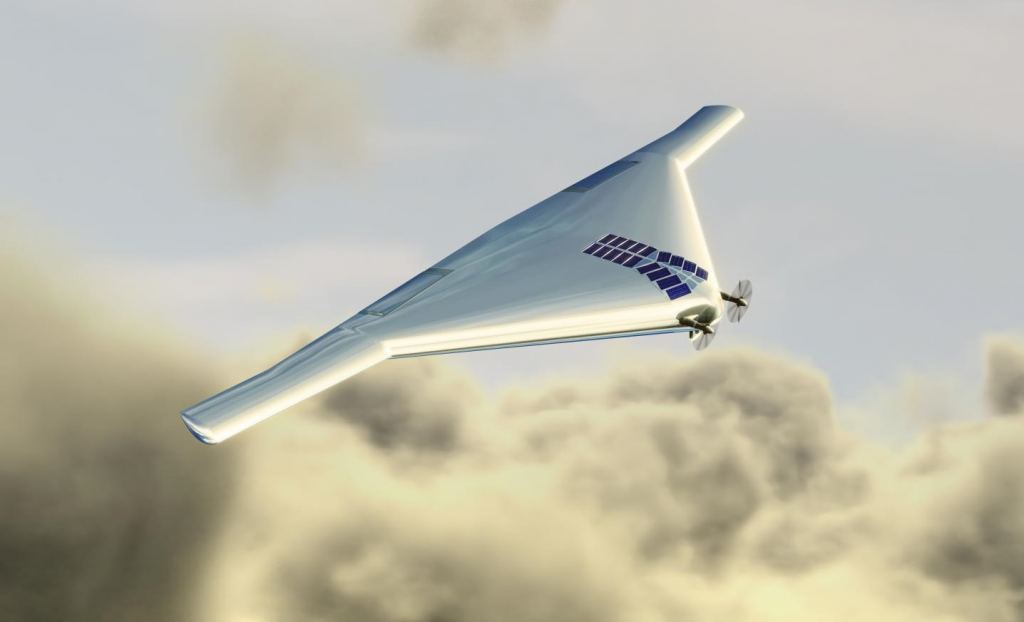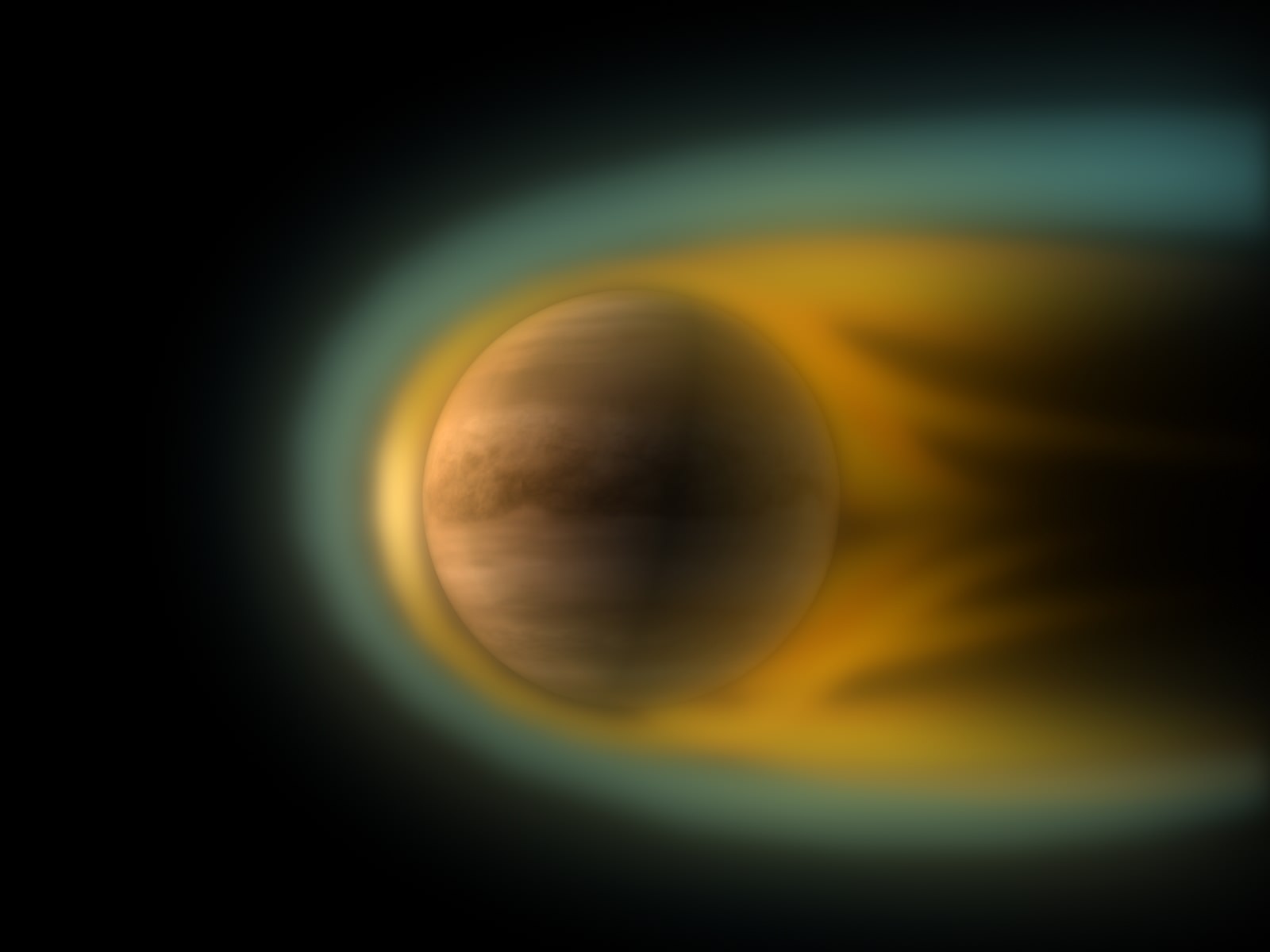Named for the ancient goddess of fertility, the planet Venus could not be more hostile to life as we know it. Aside from being the hottest planet in the Solar System, Venus has also an atmosphere that is 92 times denser than Earth’s, and regularly experiences sulfuric acid rain. But as we’ve learned from multiple surveys, Venus was once a much milder climate and even had vast oceans on its surface.
For astronomers and geologists alike, the burning question is, how much of its water did Venus hold onto during this massive transition? According to research presented by Moa Persson of the Swedish Institute of Space Physics (IRF), Venus actually retained most of its water over the past 4 billion years. Contrary to what researchers previously thought, Venus lost only a small amount of its water to a runaway Greenhouse Effect.
For her thesis, Persson analyzed data gathered by the IRF’s Analyzer of Space Plasma and Energetic Atoms (ASPERA-4) instrument, which studied Venus’ atmosphere as part of the European Space Agency’s (ESA) Venus Express mission. This instrument measuring out-flowing particles escaping from Venus’ atmosphere to learn more about how it interacts with charged particles from the Sun (aka. solar wind).

Building on this data, Persson sought to determine how much of the charged particles (ions) flowing from Venus’ atmosphere were water molecules. As Persson explained in an IRF press release:
“The surface of Venus today is comparable to hell. It is extremely dry and has a temperature of 460 degrees but historically the surface was more hospitable with a wealth of water that could reach a depth of several hundreds of meters if spread equally over the surface. This water has disappeared from Venus. My thesis shows that only a few decimeters of this water has escaped to space.”
On average, two hydrogen ions (H+) escape from Venus’ atmosphere for every one oxygen ion (O+), which indicates a loss of water. What Persson showed is that the number of hydrogen ions escaping varies over the course of the Sun’s 11-year solar cycle, with more ions being lost during a solar minimum than a solar maximum (since many are pushed back into the atmosphere by solar wind).
Meanwhile, the escape rates for oxygen ions were found to increase with an increase in energy present in the upstream solar wind. What this indicates is that Venus is efficiently preventing solar wind from stripping its atmosphere of its constituents. Based on this relation between solar wind and escape rates, Persson then considered how the Sun’s activity has evolved over time.

From this, she was able to extrapolate the escape rate of water from Venus’ atmosphere back to 3.9 billion years ago and found that it would 0.02 to 0.6 meters (0.8 inches to 2 ft) of water would have been lost across the entire surface of Venus. Right now, scientists estimate that Venus may have once been covered in oceans that were tens to hundreds of meters in depth.
In other words, the results she obtained show that the current escape process for hydrogen and oxygen ions at Venus cannot account for the loss of its surface water. In the meantime, this research, combined with missions that have examined the effects of solar wind on the atmospheres of Mars and Earth, provides a more comprehensive picture of how solar wind plays an active role in atmospheric evolution.
It also raises important questions about what might have happened to any life that existed on Venus long ago. As Persson explained:
“In my thesis, I have calculated how much water has escaped from Venus in the past. I have looked at how the ion escape is affected by the solar wind variations today and how the solar wind has changed over time. I hope further comparisons will be done of the atmospheric losses of Venus, Earth, and Mars. This is especially interesting now that signs of life may have been found on Venus.”

Ever since researchers reported the detection of phosphene and glycine in Venus’ atmosphere, scientists have been looking forward to when another mission can be sent to take a closer look. While there are multiple proposals for exploring the surface with specially-designed rovers, the possibility of microbes and/or extremophiles on Venus’ cloud tops highlights the importance of aerial concepts.
These could take the form of a semi-buoyant air vehicle like the Venus Atmospheric Maneuverable Platform (VAMP, shown above) or gliders like the Bio-inspired Ray for Extreme Environments and Zonal Explorations (BREEZE). NASA has even explored the possibility of using airships, like their High-Altitude Venus Operational Concept (HAVOC), that could simply float atop the clouds and gather all the information it needs.
By studying the interaction between solar wind and atmospheric loss on Venus, Earth, and Mars – with the added benefit of knowing how this related to water loss and impacts habitability – scientists are poised to unlock the secret of how life emerged in our Solar System and why some planets were able to sustain it and others were not. It might even help by pointing the way towards evidence of past life (or some that still exists!)
These findings were presented by Persson as part of her doctoral thesis – titled “Escape to Space or Return to Venus: Ion Flows Measured by Venus Express” – on Friday, Nov. 13th, at Umeå University, Sweden. Her faculty opponent was Dr. Dmitrij Titov of the ESA’s European Space Research and Technology Centre (ESTEC). Her full thesis can be viewed on the Umeå University website.
Further Reading: IRF


By studying the interaction between solar wind and atmospheric loss on Venus, Earth, and Mars – with the added benefit of knowing how this related to water loss and impacts habitability – scientists are poised to unlock the secret of how life emerged in our Solar System and why some planets were able to sustain it and others were not.
From page 52 of the thesis:
“… This [escape of O+ at Earth] is very similar to the O+ escape at Venus and indicates that the important factor for the escape rate might rather be gravity, not the type of interaction with the solar wind. … the coupling between the escape from Earth and the available energy upstream of the magnetosphere increases with increasing power in the upstream solar wind … indicates that the interaction with the solar wind actually funnels energy from the solar wind to the atmospheric particles, which lead to a higher escape of atmospheric particles. Currently, there is a lot of interest in understanding the difference between the escape rates at Venus, Earth and Mars. The aim is to understand if the intrinsic magnetic field at Earth really protects Earth’s atmosphere or not, which recent escape rate studies indicates is not true, and if the knowledge can be transferred to exoplanets.”
ERRATA: That first bit is a quote from the article, obviously.